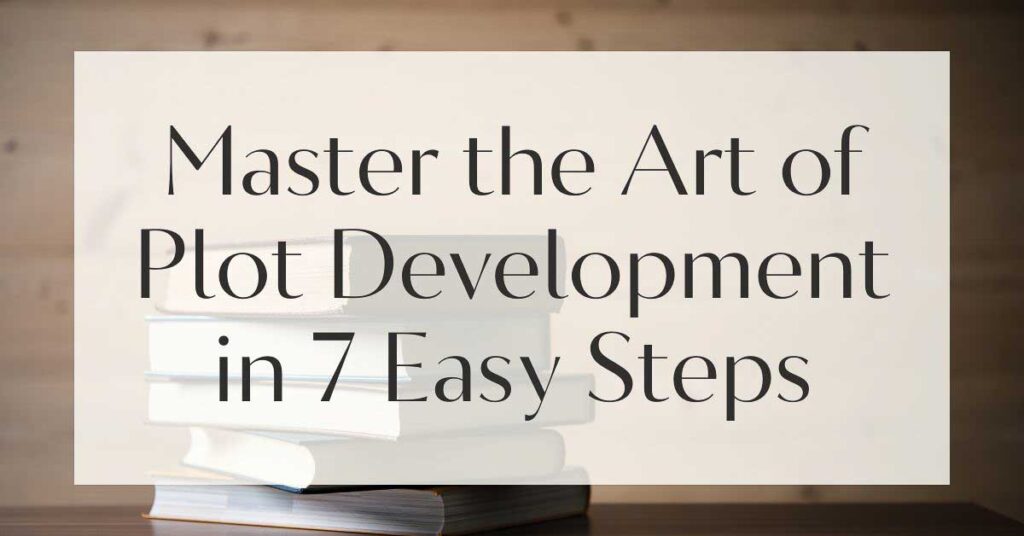Have you ever felt that nagging suspicion that a character in your story is not what they seem? Perhaps there’s a hidden layer, a secret life that bubbles beneath the surface, waiting to be unveiled. In the art of character development, these clandestine elements can add depth and intrigue, making narratives more compelling and engaging.
Secrets not only define characters but also propel stories forward, creating tension and suspense that keep readers on the edge of their seats. Dive into this exploration of how secrets shape character arcs and discover five surprising signs that your character might be harboring a hidden life.
Understanding Character Development
At the heart of every memorable story lies the intricate web of character development. It’s the lifeblood that courses through the veins of a narrative, breathing life into its characters and giving them purpose and direction.
A well-crafted character is like a mosaic, each piece representing a facet of their personality, history, and desires. Among these pieces, secrets often play a pivotal role. They are the shadows that lurk in the corners of a character’s mind, influencing their decisions and actions in profound ways.
No marketing platform? No social following? No problem!
Publisher Rocket helps you market your debut novel like a pro.
It’s a gamechanger for debut authors – try it today!


The Importance of Secrets in Character Arcs
Secrets are the unseen architects of character arcs, sculpting the journey from who a character is to who they become. They are the whispers of past experiences, the echoes of choices made in the shadows.
When a character harbors a secret, it acts as a catalyst for change, challenging their beliefs and forcing them to confront their inner demons. This internal struggle creates a dynamic arc, transforming static figures into living, breathing entities. Consider the iconic Jay Gatsby from F. Scott Fitzgerald’s “The Great Gatsby,” whose secret past fuels his relentless pursuit of a dream, ultimately shaping his tragic fate.
To craft an impactful character arc, weave secrets into the very fabric of your character’s identity. Allow these hidden truths to subtly influence their actions and decisions, creating a sense of mystery and anticipation that keeps readers engaged.
How Secrets Drive Narrative Tension
The revelation of a secret is akin to the slow burn of a fuse leading to an explosive climax. It builds anticipation, as readers eagerly piece together clues, driven by the desire to uncover the truth. This tension is the heartbeat of any gripping narrative.
By strategically planting hints and foreshadowing, writers can create a sense of impending revelation that captivates audiences. Take the example of “Gone Girl” by Gillian Flynn, where secrets and unreliable narrators weave a tapestry of suspense, leaving readers questioning every twist and turn.
Use secrets to introduce plot twists that defy expectations. By gradually revealing these hidden truths, you can maintain suspense and keep readers guessing until the very end.

Five Signs Your Character Is Hiding Something Huge
Uncovering a character’s secret life can be like peeling back the layers of an onion, each layer revealing more than the last. Here are five telltale signs that your character might be hiding something significant.
1. Unexplained Behavior and Reactions
A character’s behavior is often the first clue that something is amiss. Unexplained reactions, such as sudden anger or fear, can hint at deeper issues lying beneath the surface.
These behaviors may seem out of place, but they are the breadcrumbs leading to a hidden truth. For instance, a character who flinches at a seemingly innocuous sound might be haunted by a traumatic event from their past, a secret that colors their every action.
Inconsistencies in behavior can also serve as red flags. If a character’s actions don’t align with their established personality, it suggests that they’re concealing something. Such discrepancies create intrigue, prompting readers to delve deeper into the character’s psyche.
2. Mysterious Past and Inconsistent Backstory
A character’s past is a treasure trove of secrets waiting to be discovered. Inconsistent backstories or gaps in their history can indicate that they’re hiding something significant.
Perhaps they’ve fabricated a part of their past to protect themselves or others, or maybe they’re running from a truth too painful to face. These mysteries invite readers to embark on a journey of discovery, piecing together the puzzle of the character’s life.
Consider Severus Snape from the “Harry Potter” series, whose complex past and enigmatic actions are gradually revealed, transforming him from a perceived antagonist into a tragic hero. His hidden motives and loyalties add layers to his character, enriching the narrative and providing unexpected depth.
3. Evasive Communication Styles
When a character consistently avoids direct communication or gives vague answers, it often signals that they’re concealing something.
Evasive dialogue can be a powerful tool in storytelling, as it raises questions and encourages readers to read between the lines. Characters who dodge certain topics or deflect questions might be guarding a secret that could alter the course of the story if revealed.
Dialogue laden with subtext can create rich, multi-dimensional interactions. A character’s choice of words, tone, and body language can all hint at underlying secrets, adding tension and complexity to their relationships with others.
To enhance the intrigue in your narrative, use dialogue to subtly hint at a character’s hidden truths. Allow their evasive communication to spark curiosity and drive the plot forward.
Google Docs is for notes. Scrivener is for novels. Upgrade your writing game and try it for free today!

4. Physical Cues and Body Language Tells
Even the most guarded characters can’t completely hide their secrets from their own bodies. Physical cues and body language often betray their true emotions, providing astute readers with clues to what’s being concealed. Subtle gestures, such as fidgeting, avoiding eye contact, or tense posture, can speak volumes about a character’s internal struggles.
These involuntary tells offer a glimpse into the character’s psyche, revealing the weight of their hidden burdens. For example, a character who constantly checks over their shoulder might be living in fear of being discovered, suggesting a secret they’re desperate to protect.
| Physical Cue | Possible Interpretation |
|---|---|
| Avoiding Eye Contact | Guilt or Deception |
| Fidgeting | Anxiety or Nervousness |
| Tense Posture | Stress or Fear |
5. Relationships Marked by Distance or Deceit
Relationships are the mirrors through which a character’s secrets are often reflected. When a character maintains distance from others or engages in deceitful behavior, it suggests they’re guarding something significant. This distance can manifest as emotional detachment or an unwillingness to form close bonds, indicating a fear of vulnerability.
Deceptive actions, such as lying or manipulating others, can also be indicative of a character’s hidden agenda. These behaviors create tension and conflict within the narrative, as other characters may sense the deceit but struggle to uncover the truth. Such dynamics add complexity to relationships, making them fertile ground for drama and intrigue.

Techniques for Revealing Character Secrets
Unveiling a character’s secrets is an art form that requires finesse and precision. By employing various storytelling techniques, writers can ensure that revelations are impactful and resonate with readers.
Using Dialogue to Drop Hints
Dialogue is a versatile tool for hinting at secrets without overtly revealing them. Through carefully crafted conversations, writers can plant seeds of doubt and curiosity. Characters might slip up, inadvertently revealing a fragment of their hidden life, or they might use coded language to discuss sensitive topics.
Incorporate double meanings and subtext into your dialogue to create layers of intrigue. Allow characters to communicate on multiple levels, keeping readers engaged and guessing.
Visual Foreshadowing in Narrative
Visual elements within a narrative can serve as powerful foreshadowing tools. Symbols, recurring motifs, and seemingly insignificant details can all hint at a character’s secret. By weaving these elements into the fabric of the story, writers can create a sense of cohesion and anticipation.
For instance, in Alfred Hitchcock’s “Vertigo,” the color green is used to foreshadow the protagonist’s obsession and the eventual unraveling of his carefully constructed reality. Such visual cues add depth and richness to the storytelling experience.
Feeling lost with your debut novel?
Fiverr Pro connects you with expert editors, designers, and marketers – everything you need to get your book ready for success!

The Power of Internal Conflicts
Internal conflicts are the crucibles in which secrets are forged. A character’s inner turmoil can reveal more about their hidden life than any external action. By delving into a character’s thoughts and emotions, writers can provide readers with insight into their struggles and motivations.
These internal battles create tension and empathy, as readers become invested in the character’s journey of self-discovery. As the character grapples with their secret, the narrative gains emotional weight, culminating in a cathartic revelation.
Exploring Character Secrets in Popular Media
From literature to film, popular media is replete with examples of characters whose secrets drive the narrative. By analyzing these iconic figures, writers can glean valuable insights into the art of crafting compelling secrets.

Analyzing Iconic Characters with Hidden Lives
Characters like Walter White from “Breaking Bad” and Lisbeth Salander from “The Girl with the Dragon Tattoo” are prime examples of individuals with complex secret lives.
Their hidden motives and pasts shape their actions, creating narratives rich with tension and suspense. These characters captivate audiences as their secrets slowly unravel, revealing the intricacies of their identities.
Lessons from Literature and Film
Literature and film offer a treasure trove of storytelling techniques for unveiling secrets. From the gradual revelation of Jay Gatsby’s past to the shocking twist in “The Sixth Sense,” these narratives demonstrate the power of secrets to transform a story. By studying these examples, writers can learn how to pace their revelations and maximize their impact.
Crafting Your Own Characters with Depth
Creating characters with depth requires a delicate balance of mystery and revelation. By embedding secrets into their core, writers can breathe life into their characters, making them resonate with readers long after the final page is turned.
Building Intrigue Through Complexity
Complexity is the key to crafting intriguing characters. By layering secrets and motivations, writers can create multifaceted individuals who defy easy categorization. These characters challenge readers to look beyond the surface, inviting them to explore the depths of their personalities.
To build complexity, consider the interplay between a character’s public persona and their private life. Allow contradictions and hidden desires to shape their journey, creating a rich tapestry of intrigue.
Encouraging Reader Engagement with Secrets
Secrets are the threads that bind readers to a story, drawing them into a world of intrigue and discovery. By engaging readers in the process of uncovering these secrets, writers can create a sense of shared experience and investment. This connection fosters a deeper emotional response, as readers become active participants in the narrative.
Ultimately, the art of character development lies in the delicate dance between concealment and revelation. By mastering this balance, writers can craft stories that linger in the minds of their audience, inviting them to return time and again to uncover new layers of meaning.








